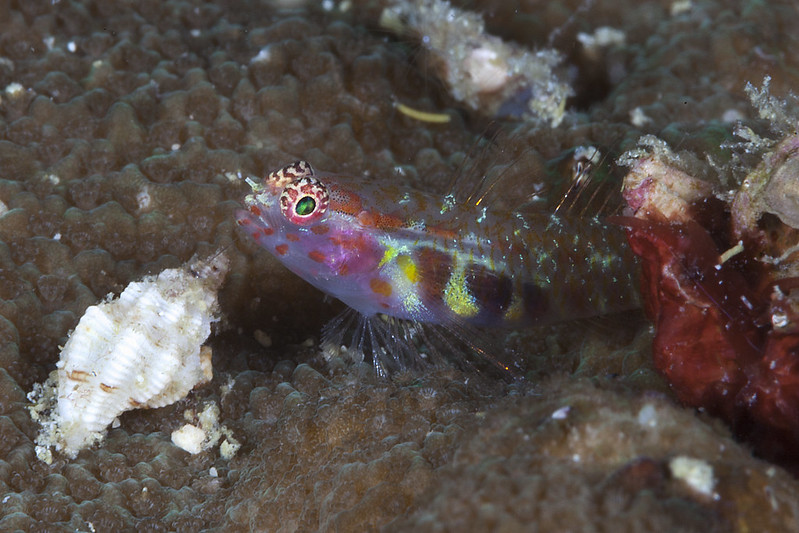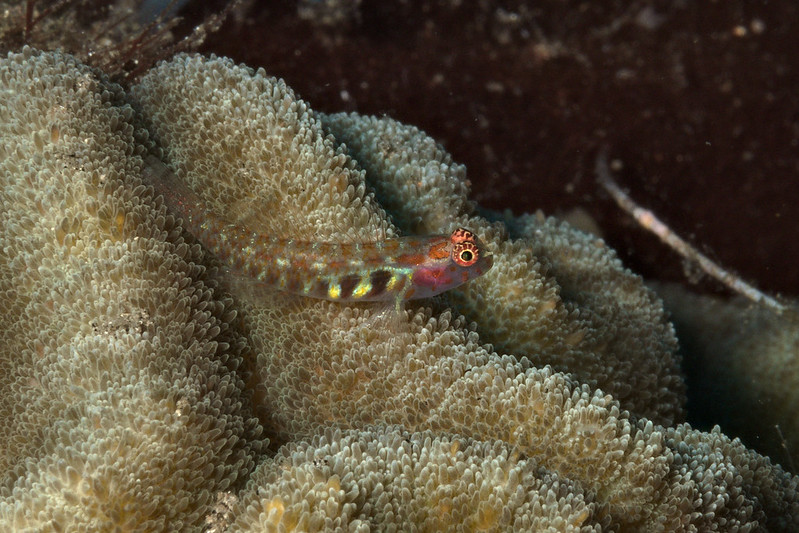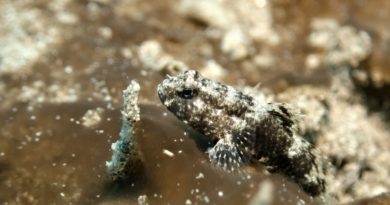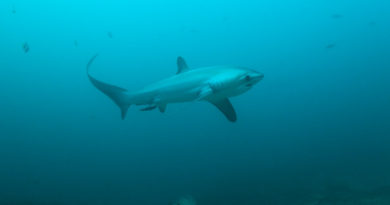What is it like to be a Dwarf-Goby
Welcome to this new series on the Pacificklaus Blog, “What is it like to be”! This, and the upcoming essays are of course inspired by Thomas Nagel’s famous essay “What is it like to be a bat’”. Nagel’s essay is one of the most highly cited ones in philosophy of the mind, so, is there really anything new I can contribute? I think so, because I am drawing from very specialized experiences which constantly make me question the state of minds of quite a wide variety of marine animals. I am an underwater photographer and videographer, and am constantly faced with the challenge of approaching the critters I intend to photograph or film, without spooking them and causing them to escape from me and my camera. On top of not scaring animals away, I want to photograph and film natural animal behavior, and I need to understand what the fish in front of my lens is trying to do in order to capture it well.
All this makes me put myself into the shoes of the fish and shrimp I am shooting (pun intended).
I am – you have probably guessed that by now – more on the side of Nagel’s essay’s critics. Not only do I believe that questions of the mind can ultimately be reduced to neurobiology, I also believe that humans are not just capable of, but uniquely capable of putting themselves into the minds of others. These could be either other humans or individuals of other species. Our advanced social intelligence evolved to allow us to navigate complex human webs of relationships.
Interpreting animal trails is thought to be a uniquely human capability, honed in the many thousands of years of the paleolithic times (the paper by Sharps et al., 2002 actually experimentally tests this proposal). A hunter tracking a deer by observing its print in the mud is forming very specific ideas about what the deer was up to, where it was heading, and what state is was in – what it is like to be that deer.
I always thought of nature photography as hunting without killing. It satisfies the same urges to stalk a fish with a camera as it does to stalk a deer with a bow. The difference is that I am hunting for a wide variety of animals which no one ever stalked for the sake of catching his dinner; I am looking for the elusive blue ringed octopus, the rare, barely thumbnail-sized harlequin crab, the flamboyant cuttlefish or the minute dwarf goby. The wide phyllogenetic range of the animals sought during my lens-equipped hunting expeditions has taught me to develop a theory of mind for an unusually wide range of creatures. In this new series I want to share what I learned.
Dwarf Gobies
Unsurprisingly, the dwarf gobies are my first subjects in regards to “What is it like to be”.
Dwarf gobies are among the smallest, and among the most short lived of all fishes and vertebrates generally.
Time
The shortest-lived known dwarf goby, Eviota sigillata, only lives at most to a bit more than 2 months, or 60 days (Depczynski, M., & Bellwood). Hence a day for this fish is more like a year for a human.
I find myself compartmentalizing my own life into blocks framed by relevant or semi-relevant events. There is “the time after which we came back from the trip to Europe, until the time when the semester started again”. These blocks typically span weeks or months in my life. Such a block of life experience time will be more akin to hours for the gobies – the time between when the damselfish swam by, and when I ate a piece of plankton.
Space
Young gobies spend about 2 weeks in a pelagic larval stage, and drift around the open ocean for many kilometers before they metamorphose and settle down as adult fishes. Then, they barely move more than a few meters between the edges of their home coral blocks.
Space goes from seemingly boundless in their youth to very restricted as adults. The good old times when he saw the world were especially good for gobies, the settled down middle- and old age is particularly provincial for them. This is an extreme case of settling down. Humans will often travel more in their 20s, and then focus on career, home and family later in life, but the contrasts will never be as extreme.
Perception
Dwarf gobies use vision, olfaction and hearing like humans, and the lateral line sense, to detect water movement, like most other fishes. The gobies’ eyes are much smaller than ours – in fact many of them would fit into one hollowed human eye-ball. The dwarf gobies still see well. What do they see? Predatory fish trying to eat them.
Anything big they see could be a deadly threat. Dwarf gobies have no time to sit and contemplate. If they see something large approaching, they need to flee. This is what I observe when I am trying to track them underwater, they are very hard to get in front of my lens. The dwarf gobies’ visual experience is more like that in a game of laser-tag than that when strolling around a museum.
Morals
What are the morals of a dwarf goby? Cowardice is a virtue. According to Depczynski, & Bellwood, the daily attrition rate in the wild is about 7%. Death can come fast and surprising, not as big but rare dangerous sharks (which would prey on much bigger fish), but in the form of mid-sized to small wrasses, sandperches or hawkfishes. Many small to mid-sized fish-eating predators or omnivores are preying on pygmy gobies. Being afraid and easily spooked will extend their lives.
Social Lives
The high death rates per day experienced by dwarf gobies will also impact their social lives. On a typical block of encrusting coral, with a surface area no greater than a square kilometer, I generally see about four or five Eviota. Their comradery will be short lived, and forming tight attachments will be useless. The goby next to our pygmy goby might not be there anymore a day or a week later. The situation is closer to that of a trench soldier in WWI than to the social life of a person in a village or city in a peaceful part of the world in 2021. My great-grandpa participated in both the battles of the Somme and Verdun, so while I don’t have to fear that my mates will be picked off with a 7% chance per day, such an experience is only 3 generations away from me.
So…
We have now covered the experiences of a dwarf goby: A vertebrate living on a highly compressed temporal and spatial scale, with a youth infinitely more different from its adulthood than ours, with friendships which don’t last long, and no time for stopping and smelling the roses on the reef. We can still not experience exactly what the dwarf goby experiences, but we can extrapolate from our own experiences towards dwarf goby life. There will of course be no language, either between gobies, or in introspection, in the goby mind, but many aspects of mental life, like seeing and forming social bonds happen in Homo sapiens and in Eviota stigillata, just in very different ways. We can extrapolate. When is this extrapolation good enough? It will never be perfect, but after reading the paragraphs above, would you really say you are clueless in regards to the questions “What is it like to be a dwarf goby?”.
Coming next: “What is it like to be a Blue Ring Octopus?”
Seeing is believing! Check out my underwater photography and underwater videography.
The Lives of Gobies is still looking for a quality publisher!
Notes:
Nagel, T. (1974). What is it like to be a bat?. The philosophical review, 83(4), 435-450.
Depczynski, M., & Bellwood, D. R. (2006). Extremes, plasticity, and invariance in vertebrate life history traits: insights from coral reef fishes. Ecology, 87(12), 3119-3127.
Sharps, M. J., Villegas, A. B., Nunes, M. A., & Barber, T. L. (2002). Memory for animal tracks: A possible cognitive artifact of human evolution. The journal of psychology, 136(5), 469-492.



